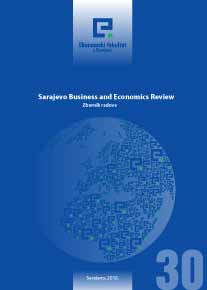Cognitive and Affective Aspects of Impulse Buying
Cognitive and Affective Aspects of Impulse Buying
Author(s): Merima ČinjarevićSubject(s): Economy
Published by: Ekonomski fakultet u Sarajevu
Keywords: impulse buying; change seeking; optimal stimulation level
Summary/Abstract: This paper investigates the construct validity of impulse buying scale proposed by Verplanken and Herabadi (2001). The purpose of this paper is to: 1) determine the roles of cognitive and affective components in the impuls buying; 2) establish the relation between impulse buying and change seeking and 3) test differences in the impulse buying behavior regarding the demographic characteristics (gender, age, marital status) of respondents. In order to test defined hypothesis, the on-line survey was carried out on a sample of 175 respondents. The results of factor analysis indicate that impulse buying includes three components: cognitive deliberation, irresistible urge to buy and buying emotions. Result of regression analysis indicates that there is a very weak positive relationship between impulse buying and change seeking. In line with our expectations, it is concluded that gender is a significant predictor of impulse buying and that women are more affected by impulse buying than men. The results of ANOVA analysis showed statistical significant difference in impulse buying tendencies among the younger and older consumers. Also, result of t-test showed a significant difference in impulse buying between the single and married consumers.
Journal: Zbornik radova - Sarajevo Business and Economics Review (SBER)
- Issue Year: 2010
- Issue No: 30
- Page Range: 168-184
- Page Count: 17
- Language: English

